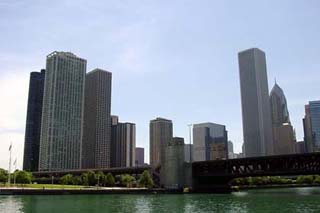
A city skyline. (Photograph courtesy of Sandra Mallalieu. Used with permission.)
Instructor(s)
Prof. Diane Davis
Prof. Roger Petersen
MIT Course Number
11.949
As Taught In
Fall 2003
Level
Graduate
Course Description
Course Features
Course Description
This course's aims are two-fold:
- to offer students the theoretical and practical tools to understand how and why cities become torn by ethnic, religious, racial, nationalist, and/or other forms of identity that end up leading to conflict, violence, inequality, and social injustice; and
- to use this knowledge and insight in the search for solutions
As preparation, students will be required to become familiar with social and political theories of the city and the nation and their relationship to each other. They also will focus on the ways that racial, ethnic, religious, nationalist or other identities grow and manifest themselves in cities or other territorial levels of determination (including the regional or transnational). In the search for remedies, students will be encouraged to consider a variety of policymaking or design points of entry, ranging from the political- institutional (e.g. forms of democratic participation and citizenship) to spatial, infrastructural, and technological interventions.


